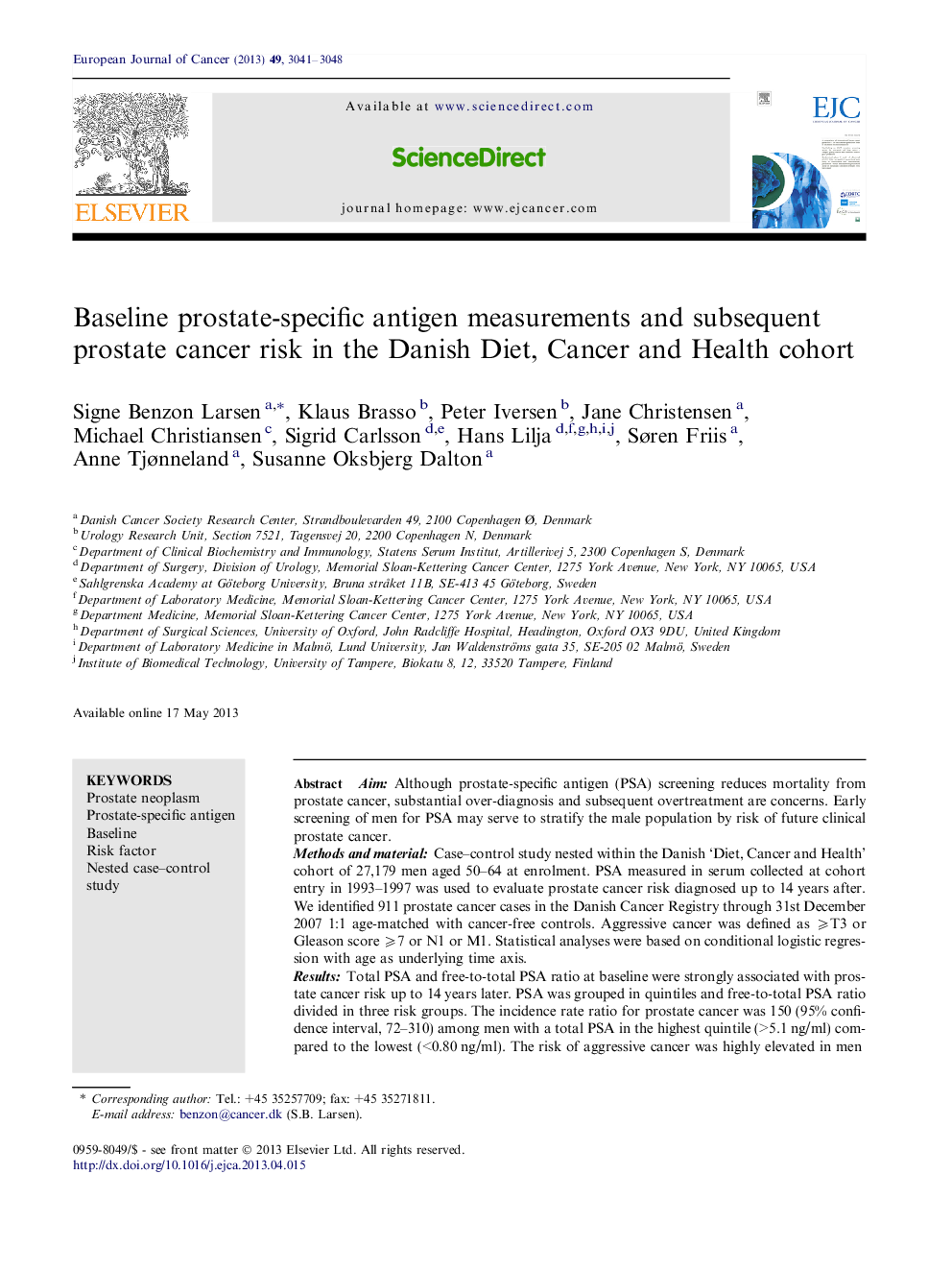| Article ID | Journal | Published Year | Pages | File Type |
|---|---|---|---|---|
| 2122068 | European Journal of Cancer | 2013 | 8 Pages |
AimAlthough prostate-specific antigen (PSA) screening reduces mortality from prostate cancer, substantial over-diagnosis and subsequent overtreatment are concerns. Early screening of men for PSA may serve to stratify the male population by risk of future clinical prostate cancer.Methods and materialCase–control study nested within the Danish ‘Diet, Cancer and Health’ cohort of 27,179 men aged 50–64 at enrolment. PSA measured in serum collected at cohort entry in 1993–1997 was used to evaluate prostate cancer risk diagnosed up to 14 years after. We identified 911 prostate cancer cases in the Danish Cancer Registry through 31st December 2007 1:1 age-matched with cancer-free controls. Aggressive cancer was defined as ⩾T3 or Gleason score ⩾7 or N1 or M1. Statistical analyses were based on conditional logistic regression with age as underlying time axis.ResultsTotal PSA and free-to-total PSA ratio at baseline were strongly associated with prostate cancer risk up to 14 years later. PSA was grouped in quintiles and free-to-total PSA ratio divided in three risk groups. The incidence rate ratio for prostate cancer was 150 (95% confidence interval, 72–310) among men with a total PSA in the highest quintile (>5.1 ng/ml) compared to the lowest (<0.80 ng/ml). The risk of aggressive cancer was highly elevated in men with a PSA level in the highest quintile. The results indicate that one-time measurement of PSA could be used in an individualised screening strategy, sparing a large proportion of men from further PSA-based screening.
